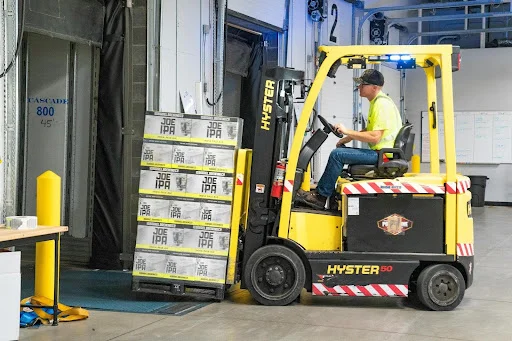When it comes to global and domestic trade, freight forwarding is the backbone of logistics. The movement of goods from one location to another is critical for businesses of all sizes, and the chosen mode of transportation significantly affects cost, speed, reliability, and environmental impact. Air, sea, and land freight forwarding solutions all offer distinct advantages and limitations, depending on the nature of the cargo, delivery deadlines, and the geographic reach of the supply chain. Understanding these differences helps businesses make strategic decisions about how to ship their goods efficiently and cost-effectively. In this blog post, we’ll explore the unique characteristics of air, sea, and land freight forwarding, comparing each method across vital logistics factors.
Speed and Delivery Time
When it comes to shipping logistics, speed is often a deciding factor in choosing a transportation method. Air freight offers the fastest delivery, ideal for time-sensitive or high-value shipments, while sea freight is significantly slower but cost-effective for bulk goods. Land freight falls somewhere in between, depending on distance and infrastructure. Choosing the right freight partner, especially one who understands how to balance delivery speed with cost and route efficiency, is crucial in this process. Matching shipping speed with the urgency of your goods ensures smoother supply chain operations and better customer satisfaction across all markets.
Cost and Budget Considerations
Cost is a major factor in choosing a freight forwarding method, and here, sea freight generally wins in terms of affordability, particularly for large or heavy shipments. Ocean transport is more cost-effective due to economies of scale, as massive container ships can carry thousands of tons of cargo at once. Land freight costs vary depending on fuel prices, tolls, and the route taken, but it often remains competitive for short to medium distances. Air freight is by far the most expensive. Airlines charge based on weight and volume, making this option less suitable for bulky or low-value goods. Businesses working with tight logistics budgets often turn to sea or land transport to strike a better balance between cost and time.
Environmental Impact
Sustainability is becoming a growing concern in supply chain management, and each freight option has a different environmental footprint. Sea freight, while slower, is generally considered more eco-friendly per ton-mile than air freight, primarily due to the high volume of goods moved at once. Emissions from older ships and fuel types can still pose environmental challenges. Land freight’s environmental impact depends on whether goods are moved by truck or rail, with rail being significantly more fuel-efficient and greener. Air freight, despite its speed, is the least environmentally friendly option, emitting a higher amount of CO₂ per kilogram of cargo. Companies aiming to lower their carbon footprint are increasingly considering multimodal solutions that reduce reliance on air transport.
Cargo Type and Suitability
The nature of the cargo being transported plays a vital role in determining the appropriate mode of freight forwarding. Air freight is ideal for perishable goods, pharmaceuticals, electronics, and other time-sensitive or high-value items that require secure and fast delivery. Sea freight, with its vast capacity, is well-suited for bulk commodities like raw materials, machinery, and non-perishable consumer goods. It accommodates oversized or irregularly shaped cargo better than planes or trucks. Land freight is commonly used for the regional distribution of consumer goods, food products, and retail inventory.
Expand your knowledge with this handpicked companion read.
Reliability and Risk Management
Each freight forwarding option comes with its reliability factors and risks. Air freight tends to offer higher reliability in terms of schedules and fewer delays, though weather disruptions or customs issues can occasionally cause setbacks. Sea freight is more susceptible to delays due to port congestion, vessel schedules, or adverse weather at sea. Cargo theft and damage are considerations, though modern container security measures have significantly reduced risks. Land freight reliability often depends on the state of the road network, driver availability, and traffic conditions for Land Freight Forwarding Solutions. Regulatory differences across borders may lead to unexpected delays.
Infrastructure and Accessibility
The availability and quality of infrastructure determine how easily each freight method can be utilized. Air freight requires proximity to international airports with cargo handling capabilities, which may not be accessible for all businesses. Sea freight needs access to ports and efficient drayage services to move containers to and from ships. This makes sea freight ideal for companies operating near coastal or riverine transport hubs. Land freight has the advantage of extensive road and rail networks in many parts of the world, offering last-mile delivery and greater reach into remote or inland areas. For businesses located away from ports or airports, land freight may serve as a primary or supporting mode of transport in an integrated logistics strategy.
Choosing between air, sea, and land freight forwarding solutions depends on a variety of factors, including budget, cargo type, delivery timelines, and environmental priorities. No single method fits all needs, and many businesses find that combining these options through multimodal logistics provides the best efficiency and flexibility. By understanding the fundamental differences between these freight forwarding solutions, companies can make informed choices that support their operational goals, customer expectations, and sustainability commitments.
Ready for a deeper dive? Our most popular pieces live at 2A Magazine.







